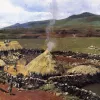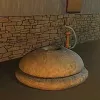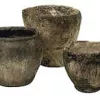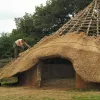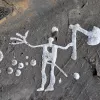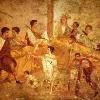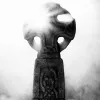Important update from TheSchoolRun
For the past 13 years, TheSchoolRun has been run by a small team of mums working from home, dedicated to providing quality educational resources to primary school parents. Unfortunately, rising supplier costs and falling revenue have made it impossible for us to continue operating, and we’ve had to make the difficult decision to close. The good news: We’ve arranged for another educational provider to take over many of our resources. These will be hosted on a new portal, where the content will be updated and expanded to support your child’s learning.
What this means for subscribers:
- Your subscription is still active, and for now, you can keep using the website as normal — just log in with your usual details to access all our articles and resources*.
- In a few months, all resources will move to the new portal. You’ll continue to have access there until your subscription ends. We’ll send you full details nearer the time.
- As a thank you for your support, we’ll also be sending you 16 primary school eBooks (worth £108.84) to download and keep.
A few changes to be aware of:
- The Learning Journey weekly email has ended, but your child’s plan will still be updated on your dashboard each Monday. Just log in to see the recommended worksheets.
- The 11+ weekly emails have now ended. We sent you all the remaining emails in the series at the end of March — please check your inbox (and spam folder) if you haven’t seen them. You can also follow the full programme here: 11+ Learning Journey.
If you have any questions, please contact us at [email protected]. Thank you for being part of our journey it’s been a privilege to support your family’s learning.
*If you need to reset your password, it will still work as usual. Please check your spam folder if the reset email doesn’t appear in your inbox.
The Iron Age
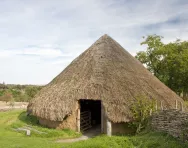
What was the Iron Age?
'The Iron Age' is the name given to the time period (from approximately 500 BC to 43 AD in Britain) where iron became the preferred choice of metal for making tools. In Europe, The Iron Age marks the end of prehistory after the Stone Age and the Bronze Age.
In Britain the end of the Iron Age is linked to the spread of Roman culture following the Roman invasion of 43 AD.
Top 10 facts
- The Roman name for the inhabitants of the British Isles was Britons. The Britons were part of the Celtic people who lived throughout Northern Europe at this time.
- Iron was tougher than bronze and could be shaped into finer and sharper objects. It required smithing (heating and hammering) to make into tools and implements.
- The manufacture, casting and trading of bronze had required special skills and made those people who possessed these skills wealthy and powerful. Iron was more readily available than bronze and was easier to work.
- Iron ploughs called ards were more efficient than earlier bronze or wooden ploughs. This meant they could till heavier soils so more land could be used for farming.
- As farming became more productive the population began to rise.
- One of the most important and time-saving inventions of the Iron Age was the rotatory quern which was used for grinding grain to make flour. The grain was placed between two circular stones and the top stone was turned or rotated using a handle.
- The diets people ate, the houses they lived in and the customs they followed varied depending on which part of the country they inhabited.
- Most Iron Age people worked and lived on small farms and their lives were governed by the changing of the seasons.
- Grain was stored in granaries or in underground vaults. Meat or fish could be preserved by salting or smoking.
- As people began to produce and store more grain than they could use, they were able to trade the surplus. Land ownership and grain production became the way to gain wealth and power.
Timeline
- 1200 BCIron Age begins in the Eastern Mediterranean
- 800 BCUse of iron spreads to Central Europe; first Iron Age hill forts built in Britain

- 700 BCIron widely used in Britain
- 500 BCCeltic people arrive in Britain from Central Europe

- 400-300 BCRotatory quern arrives in Britain
- 100 BCFirst coins minted in Britain
- 54 BCJulius Caesar lands in Britain
- 43 ADThe Roman invasion of Britain

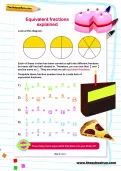

Boost Your Child's Learning Today!
- Start your child on a tailored learning plan
- Complete the activities added each week
- Watch your child's maths & English confidence grow!
Did you know?
- Iron Age Britain was famous for its hunting dogs.
- Coinage was first minted in Britain around 100 BC. Coins were made of gold, silver and bronze.
- Iron Age Britons ate porridge made of barley and rye.
- Only about a quarter of children born during the Iron Age reached adulthood. The average life expectancy at birth was 25 years.
- Iron Age Britons played board games with glass pieces.
Look through the gallery and see if you can spot the following:
- An Iron Age Farm
- A Rotatory Quern
- Iron Age cooking pots
- Iron Age tools
- Thatching an Iron Age roundhouse reconstruction
Gallery
About
The move from bronze to iron as the preferred toolmaking metal brought with it a range of social changes. Wealth and power were no longer related to the production and trade in metal but were now associated with food surpluses and land ownership. Improvements in agriculture and diet were reflected in a rising population. It is estimated that between one million and one and a half million people were living in Britain at the time of the Roman invasion.
Iron Age Britain was populated by Celtic tribes who had close links to continental Europe. These links were reinforced by trade between the South of Britain and the continent. British exports included grain, metal, dogs and slaves and imports included wine, oil and pottery.
Regional differences became more evident in culture, diet and housing. In Scotland Iron Age people lived in brochs (circular stone towers), crannogs, (wooden dwellings built on islets) and wheelhouses (stone roundhouses). Most people in the South lived in wattle-and-daub roundhouses forming small farmsteads.
Burial practices also varied. In Cornwall Iron Age people were buried in stone-lined graves. In the late Iron Age people in the South East cremated their dead.
One of the most dominant features of the Iron Age countryside was the hill fort. These were often surrounded by banks, ditches and wooden fortifications. In times of peace they were sometimes inhabited by farmers and they could provide shelter for local populations during war. Unfortunately for the local Celts they proved no match for superior Roman military technology.
By the end of the Iron Age some larger settlements known as oppida were emerging. These could be found as far north as Yorkshire and reflected tribal power in the areas in which they are found. As many as 20 oppida have been identified in Britain, the best known being Colchester and St Albans.
Related Videos
Just for fun...
- Take a Celts, Bronze Age, and Iron Age quiz to show off your knowledge
- Build a mini Iron Age roundhouse and grow your own archeological cropmarks
- Make an Iron Age grain store
- Print some Iron Age-themed worksheets
- Print out an Iron Age colouring sheet
- Compare Iron Age life in the Somerset marshes with modern life
- Read an Iron Age girl's story on the Dyfed Archaeological Trust website
Children's books about the Iron Age
Find out more
- Read the BBC Bitesize guide to how Iron Age people lived
- Watch a KS2 history animation about Iron Age Britain on the BBC Teach website
- Information about the Iron Age on the Kiddle encyclopedia
- Find out about life in an Iron Age village
- Download an Iron Age information booklet with lots of pictures and facts
- A children's guide to Iron Age life
- What has survived from Iron Age Britain?
- Look at Iron Age objects in detail: an early Iron Age boat, Iron Age horse trappings and tools used for making clothes in Iron Age Britain
- Investigate Iron Age artefacts: an Iron Age chariot horn cap, an Iron Age glass bead and an Iron Age brooch
- See pictures of the amazing Gundestrup Cauldron, which dates from the Iron Age, and find out more about the images of the Cauldron
- Look at the Roos Carr Figures, wooden Iron Age figures carved from yew with inset quartzite eyes
- The stater gold coin dates back to the 1st Century CE and was found in the land of the Celtic Parisi tribe, who lived in East Yorkshire
- A BBC Bitesize video offers an introduction to Iron Age hill forts
- Activities and resources about Hembury Iron Age hillfort in Payhembury, Devon
- Iron Age Ireland
- Find out about Iron Age buildings in Scotalnd, called crannogs
- Find out what Iron Age people wore, ate and spent their time doing
- Investigate life in Iron Age London with an interactive Museum of London resource
See for yourself
- See Iron Age artefacts at the British Museum
- Visit the Museum of the Iron Age at Andover near Danebury Hill Fort
- Visit a hill fort and replica Iron Age village at Castell Henllys, deep in the Pembrokeshire Coast National Park
- Visit Butser Ancient Farm, an ancient farm with constructions of Iron Age buildings in the South Downs National Park
- Maiden Castle in Dorset was one of the largest and most complex Iron Age hillforts in Europe
- Visit the Iron Age roundhouse reconstruction and Iron Age earthouse reconstruction at the Ancient Technology Outdoor Education Centre in Dorset
- Visit the Scottish Crannog Centre
- Look at The Young Archaeologists' list of Iron Age sites to find a site near you
